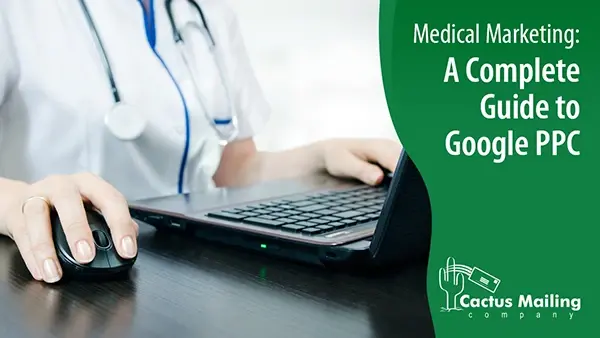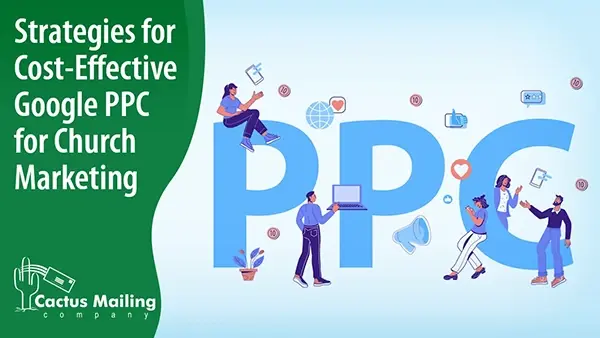We Are Here to Help!
Get pricing details and strategies that will work for your business.
Google Pay-Per-Click (PPC) advertising is a powerful asset for medical professionals aiming to enhance their digital footprint and engage with a potential patient. Mastering Google PPC can be a game-changer in healthcare marketing. Our complete guide will help you navigate the intricacies of developing and executing a successful Google PPC campaign specifically tailored to the unique needs and challenges of the healthcare sector. From understanding the nuances of keyword selection to crafting compelling ad copies and optimizing landing pages, each step is designed to maximize your online visibility and patient engagement effectively.
Define Your Medical PPC Ads Objectives
Establish specific objectives for your Google ads campaign. These should align with your medical practice's unique goals and growth strategies, such as increasing patient appointments, raising awareness about specialized treatments, or promoting health check-up packages.
Some Objectives for Medical PPC Campaigns:
- Increase Patient Appointments: Use healthcare PPC campaigns to direct potential patients to your practice's website or appointment booking page. Highlight the ease and convenience of your booking process, availability of appointments, and the range of services offered, from general consultations to specialized treatments.
- Promote Telehealth Services: Focus on reaching patients who prefer or require remote consultations. Highlight the benefits of telemedicine, such as flexibility, privacy, and accessibility. Target your search ads to specific demographics that might benefit most from telehealth, such as busy professionals, elderly patients, or residents in rural areas.
- Enhance Brand Awareness: Create campaigns that showcase your practice's unique qualities, expert staff, and state-of-the-art facilities. Use compelling narratives and imagery in your ads to build a strong, relatable brand identity that resonates with your target audience.

- Educate About Health Conditions and Treatments: Design informative PPC ads that provide insights into common health conditions, preventive measures, and the latest treatment options available at your clinic.
- Drive Engagement for Health Awareness Campaigns: Advertise community health initiatives like free screening days, health education seminars, or wellness challenges. Use these campaigns to emphasize your practice's commitment to community health and preventive care.
- Attract Patients for Specialized Services: Develop ads highlighting your practice's specialized services, such as cosmetic procedures, sports medicine, or advanced surgical techniques. Use targeted keywords to reach audiences searching for these specific services.
- Collect Patient Feedback and Testimonials: Create ads encouraging patients to share their experiences and feedback. Highlight the value of patient opinions in improving services. Use these testimonials in your marketing materials to build trust and authenticity with potential patients, showcasing real-life success stories and patient satisfaction.

Do Keyword Research for the PPC Campaign
A successful medical marketing PPC campaign's foundation lies in a strategic keyword research approach. To effectively conduct keyword research for a PPC campaign in the healthcare sector, it's essential to pinpoint keywords that are not only relevant to your services but also resonate with your target audience's search behaviors.
It involves identifying keywords that will attract targeted traffic to your website and continuously refining your keyword list to align with evolving search trends and patient needs.
Here's a step-by-step guide to developing a robust keyword strategy:
- Understand Your Services and Audience: List specific services your medical practice offers, such as 'pediatric care', 'cardiology', or 'women's health.' Also, consider your potential patients' language when searching for these services.
- Use Keyword Research Tools: Utilize tools like Google Keyword Planner, SEMrush, or Ahrefs to find relevant keywords and access data on search volume, competition level, and related search terms you might have yet to consider.
- Analyze Search Intent and Organize into Ad Groups: Are people looking for information ('what is a good blood pressure?'), looking to book an appointment ('cardiologist near me') or seeking a second opinion ('best cardiologist in [City]')? Tailor your keywords to match these intents and organize them into specific ad groups for a more targeted and relevant ad campaign. For example, group all keywords related to 'pediatric care' in one ad group and those related to 'cardiology' in another.
- Consider Long-Tail Keywords: These are longer, more specific phrases that are less competitive but can attract more qualified traffic. For example, 'affordable children's asthma treatment' or ‘emergency medical services open weekends.'
- Localize Your Keywords: If your practice serves a specific geographic area, include local keywords like 'family doctor in [City]' or '[Neighborhood] women's health clinic.' Localized keywords help attract patients who are searching for services in their area.
- Check Out the Competition: Analyze what keywords your competitors are ranking for to gain insights into what might work for your campaign and help identify gaps in their strategies that you can exploit.
- Integrate Negative Keywords: These are terms for which you don't want your ads to appear. Including negative keywords can enhance the focus of your campaign and prevent irrelevant traffic, such as 'free medical services' if you don't offer them.
- Test and Refine: Launch your campaign with chosen keywords and monitor their performance. The effectiveness of keywords can change over time. Regularly review and update your keywords to ensure they perform well, and adjust your strategy based on the latest trends, patient needs, and campaign data.
Set Up Your Google Ad Account
Setting up a Google Ads account is your first step towards launching a successful PPC campaign in healthcare. The following steps will help you lay a solid foundation for a PPC campaign that can effectively attract new patients and grow your medical practice.
Step 1: Create Your Account
- Go to the Google Ads website (ads.google.com) and click "Start Now."
- Sign in with an existing Google account or create a new one for your business. Using a dedicated account helps in organizing and managing your ads more effectively.
Step 2: Enter Business Details
- Provide essential details like your medical practice's name and website URL to tailor your digital advertising experience.
- Advertising Goals: Select goals that align with your medical practice’s objectives, such as ‘Get more website sales or sign-ups’, ‘Get more calls’, or ‘Increase visits to your physical location.'
Step 3: Define Your Campaign
- Campaign Type: Choose a Google ads campaign type that best suits your advertising goals. For medical practices, ‘Search Network’ campaigns are often the most effective, as they target users actively searching for healthcare services.
- Geographical Targeting: Set up geographical locations where you want your search ads to appear. It could be based on the areas you serve, such as specific cities or regions.

Step 4: Set Up Billing
- Billing Information: Enter your billing information. Google Ads operates on a pay-per-click model, so you must provide payment details to handle the costs associated with your ads.
- Budget Setting: Determine a daily budget for your campaign. Start with a smaller budget and increase it gradually as you become more familiar with the platform and the performance of your campaigns.
Step 5: Audience Targeting
- Audience Demographics: Define your target audience based on demographics like age, gender, and location. For instance, if you specialize in pediatric care, you might target parents in your local area.
- Keywords and Interests: Choose relevant keywords and interests that your potential patients might use to find your services. It could include terms like "family healthcare," "emergency dental services," or "local pediatrician."
- Ad Group: Segment your keywords into ad groups based on specific services or patient needs for more targeted and relevant ad copies for each group. For example, create separate ad groups for 'pediatric care,' 'dental services,' and ‘emergency care.’
Step 6: Compliance with Healthcare Advertising Policies
- Ad Policies: Familiarize yourself with Google’s healthcare and medicines advertising policies. Medical advertising often has strict guidelines to ensure content is accurate, legal, and safe for potential patients.
Create An Effective PPC Ad Copy and Landing Page
Creating compelling PPC ad copies and effective landing pages is integral to a successful Google PPC campaign in medical marketing.
They work hand in hand to capture the attention of a prospective patient, encourage them to click through to your website, and convert clicks into appointments. Here's how to create an ad copy that resonates and converts into tangible actions.
- Understand Your Potential Patient: Know your target audience's concerns, needs, and language. For example, if your practice specializes in geriatrics, your ad copy should speak directly to the problems of older adults or their caregivers.
- Highlight Unique Selling Points (USPs): Emphasize what sets your practice apart, such as specialized treatments, state-of-the-art facilities, experienced medical staff, or patient-centric care approaches. Mention any notable certifications or accreditations that enhance the credibility of your practice.
- Incorporate Ad Extensions: Enhance your ads by adding ad extensions. These features expand your advertisement, providing additional information and ways for potential patients to interact with your ad. Ad extensions can significantly improve the click-through rate of your ads by making them more prominent and informative. Here's an article on 14 Types of Google Ads Extensions by Search Engine Journal.
- Include a Direct and Actionable Call to Action (CTA): Use CTAs like "Book Your Appointment Today" or "Contact Us for a Consultation". Ensure CTA is prominent and encourages immediate action.
- Keep It Clear and Use Emotional Triggers: Avoid medical jargon. Use simple, straightforward language that is easily understood by a general audience. Craft your message to connect emotionally, showing empathy for patient concerns and assuring them of the best possible care at your facility.
- Match Ad Copy and Landing Page Content: Ensure landing page linked in your ad provides relevant information and a user-friendly experience. The content should align with the ad and make it easy for visitors to take the next step.
- Focus on User Experience: The page should load quickly and navigate easily. A mobile-responsive design is critical as many users will access your site via smartphones.
- Highlight Key Information: Display your services, easy-to-find contact details, and a simple appointment booking process. If you include a form, keep it short and straightforward. Ask for essential information only, like name, contact details, and reason for the appointment.

Set Bidding and Budget for Your Healthcare PPC Advertising
Setting and adjusting your bidding and budget are crucial for maximizing the effectiveness of your healthcare PPC campaign while maintaining cost efficiency. Continuous monitoring and adaptation are necessary to ensure optimal performance and return on investment.
Step 1: Choose a Bidding Strategy
The bidding strategy impacts how often your ads are shown, who sees them, and how much you spend. Each strategy is suited to different campaign goals and levels of user involvement in bid management.
- Manual Bidding: Gives you complete control over bid amounts for each keyword.
- Automated Bidding: Utilizes Google's algorithms to adjust bids automatically based on campaign goals.
- Conversion-Focused Bidding: Strategies like Target CPA (Cost Per Acquisition) and Target ROAS (Return on Ad Spend) are ideal for driving specific actions such as appointments or form submissions.
Step 2: Determine Your Paid Advertising Budget
Establishing the amount of money allocated for spending on a pay-per-click advertising paid search campaign is vital to managing your campaign's financial resources effectively.
- Daily Budget: Decide an average amount you are comfortable spending daily.
- Campaign Budget Allocation: Distribute your budget across different campaigns, prioritizing those targeting more competitive keywords or showing better performance.
- Campaign Duration: Adjust the budget based on whether your campaign is short-term (higher daily budget) or long-term (moderately lower budget).
- Competitive Keyword Costs: Be aware of the higher costs for competitive keywords in healthcare. Balance your budget using a mix of broad and niche keywords.
Launch, Monitor, and Optimize Your Healthcare Ads
Launching your healthcare PPC campaign is just the beginning of a continuous monitoring and optimization process to achieve the best results. Post-launch, tracking key metrics like click-through and conversion rates is essential, which provides valuable insights into the campaign's effectiveness. Regular experimentation with ad elements through A/B testing, adjusting bids, and refining targeting strategies are crucial for enhancing ad performance. Adjusting campaigns includes tweaking headlines, descriptions, and calls-to-action and modifying bids on specific keywords based on their performance. Fine-tuning these aspects helps maximize the campaign's return on investment and reduce unnecessary expenditure.
Integrating PPC campaigns with other digital marketing efforts such as SEO, social media marketing, and content marketing is vital for a holistic online marketing approach. Integration creates a cohesive and comprehensive strategy, ensuring consistency across various digital platforms. Using insights from PPC advertising through Google Analytics to inform other marketing efforts, like incorporating successful keywords into SEO initiatives, can amplify the overall effectiveness of your digital marketing. A well-rounded approach enhances the reach and impact of your healthcare practice's online presence. It ensures a better return on your digital marketing investments.

Conclusion
Mastering Google PPC for medical marketing is a journey that combines strategic planning, continuous optimization, and a deep understanding of your target audience's needs. The effectiveness of a well-executed PPC campaign in the healthcare sector can be transformative, significantly enhancing your practice's online visibility, attracting more patients, and building a strong, reputable brand presence. By meticulously selecting the right keywords, crafting compelling ad copies, and continuously refining your bidding strategies and budgets, you unlock the potential to connect with patients when they seek your services.
Embracing the dynamic nature of PPC advertising, adapting to evolving market trends, and leveraging data-driven insights will keep your medical practice at the forefront of digital healthcare marketing. Ultimately, the power of Google PPC, when harnessed effectively, is in laying the foundation for sustainable growth and long-term success in an increasingly competitive healthcare industry.
Our postcards have helped various businesses get leads, boost brand awareness, and grow revenue. Let us help you create a marketing postcard design to achieve your marketing goals!

 Cactus Mail Team: Apr 29, 2024
Cactus Mail Team: Apr 29, 2024


